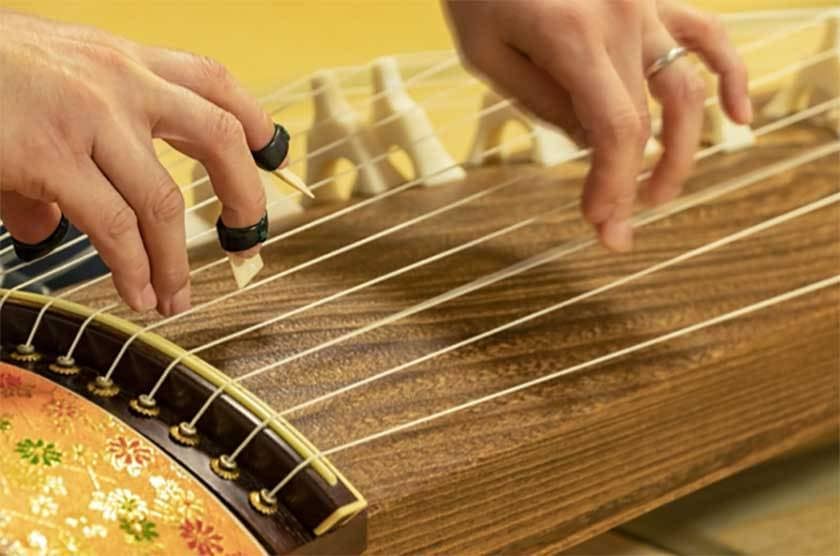
Hello, it’s Kaoru the composer here!
Do you enjoy playing Japanese instruments?
Most of you would probably answer with a resounding “NO!”
Although traditional Japanese musical instruments are a part of Japanese culture, it is hard to say that we are familiar with these instruments because we don't have a chance to touch them very often!
However, Japanese instruments have been used in Japanese music since ancient times, and these profound instruments are filled with the souls of craftsmen!
So, here we go! From this point on, I would like to introduce the history, structure, and trivia of each of the Japanese musical instruments.
First of all, let's talk about the Koto.
What is the Koto?
The koto has existed as a ritual tool since the time of the Kojiki (Records of Ancient Matters).
Remnants of what appear to be the first kotos have already been found at Toro ruins and other Yayoi period sites around Japan, and haniwa (clay figurine) from the Kofun period depicting a person playing the koto has also been found, suggesting that the koto was popular for quite some time.
Unlike today's koto, the ancient koto is thought to have been played by striking or plucking the strings with a plectrum.
During the Nara period (710-794), a musical instrument that was also called the koto was introduced from China, and it is believed to have been fused with the ancient Japanese koto, which led to the modern koto.
It is said that changes were made to the instrument in each period, and it settled down to its modern form.
In the Heian period (794-1185), the koto became popular among the aristocracy, and in the Edo period (1603-1868), the koto became a popular form of entertainment.
- Yatsuhashi Shikenkyou (Yatsuhashi examination school)
- Yamada Kengyo of the Yamada School
- Ikuta Kensuke of the Ikuta School
and others, a new style was born.
It also became an instrument known to everyone as it was enjoyed by many as a form of practice.
By the way, the two Japanese characters that are used for the koto, 琴 (koto) and 箏 (koto) are often confused with each other.
琴 = The place where the strings are pressed down determines the pitch.
筝 = the pitch of the strings is controlled by a movable post called a hari (pillar)
There is a clear difference between the two!
Types of Koto
There are many different types of koto.
The most well-known is the 13-stringed koto.
It has 13 strings and its body is about 180 cm long.
The pitch is adjusted by shifting the position of the movable post (ji).
Additional Koto
There is also the “17-string” koto, which has a wider range of sound due to the increased number of strings, and the unusual “1-string” koto, which has a single string stretched over a single board.
Charm of Koto
The koto may seem somewhat difficult to play, doesn't it?
However, this traditional Japanese instrument is perfect for beginners!
I would like to list some of the charms of the koto!
1. Easy Music Notation
Basically, the music is very simple, so you only need to know some Chinese numbers and a few rules!
Even if you are not good at stave notation, this notation can be understood right away.
2. Easy to play
All you have to do is pluck the strings, so even beginners can produce a beautiful tone.
Of course, accurate tuning is necessary!
3. Many hands-on workshops
Depending on each municipality, you can also learn at your local culture center.
In some cases, you can participate for free, which I highly recommend for those who are interested!
What you need to start playing the koto
The first thing you need to have when practicing the koto (koto) is your own koto nails.
Basically, koto nails are used with the thumb, index, and middle fingers of the right hand.
Each has a different size and material, so choose the one that suits you best.
Like guitar picks, koto-nails are sharpened as you play.
In other words, they are consumable parts, so be careful when purchasing them.
Difference by material
- Plastic
Inexpensive
Easy to get
Easy to maintain
Easier to break than ivory
- Ivory
Expensive
Best for playing koto (many professionals are fond of it)
Requires maintenance as it discolors over time
- Whale bone
Whale bone is not often used because it has many grooves that cause indentations on finger nails, so it’s not a popular option.
- Tortoiseshell
Softer than ivory
Generally not sold very often due to lack of users
- Bovine bone
Thin
Hard to break
Inexpensive
The tone is as good as ivory!
It is recommended to use them differently!
There is a set of koto sold as shown here, which is recommended for beginners.
SUZUKI / Koto Tsume Set, size L, black
Ikuta-style koto nail set. Three nails are in a set: it’s common for one to be for the thumb and two for the index and middle fingers. Nail rings are black, size L. A drawstring bag is included for easy carrying.
The Ikuta style is characterized by its nails being angular. It is played by plucking this angular part on the strings!
Come pick up the products we carry at Sound House!
This is a compact sanshaku koto, which is half the length of a full-size koto (92cm). The compact size makes it ideal for practicing at home. Weighing at 2.8 kg, it is easy to carry and can be placed on a desk for playing.
The basic position of the flat tone can be seen at a glance with the pillar position mark, so it is easy to know where you are playing. A koto nail set (set of 3 each of nails in sizes M and L) and a yutan are also included, which I recommended for beginners!
This music stand is the perfect height for sitting down to play. Made of paulownia wood for durability. The design fits perfectly in a Japanese-style room.
SUZUKI / Yamada-style nails - white elephant
Yamada-style nails are characterized by their pointed tips. It is plucked perpendicular to the strings.
It is comparatively often used in song playing.
The above is an explanation of the traditional Japanese musical instrument the koto and recommended products to use with the koto. I believe that this Japanese musical instrument has been the basis of Japanese music since ancient times.
I hope you will all check it out!
The column “sound & person” is made possible by your contributions.
For more information about submissions, click here.





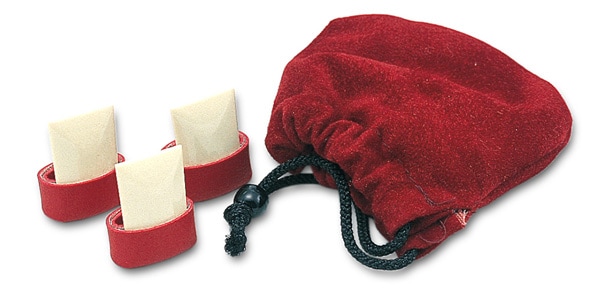
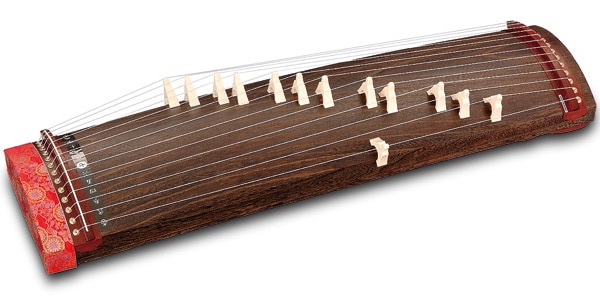
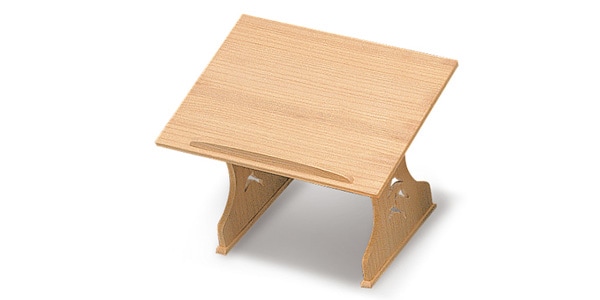
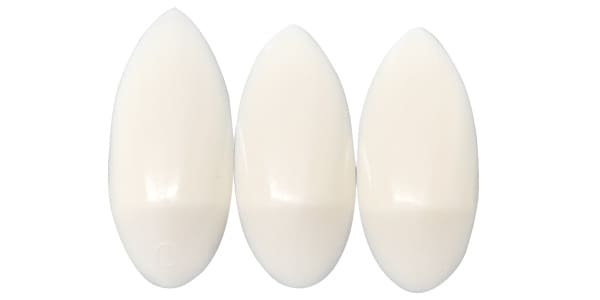










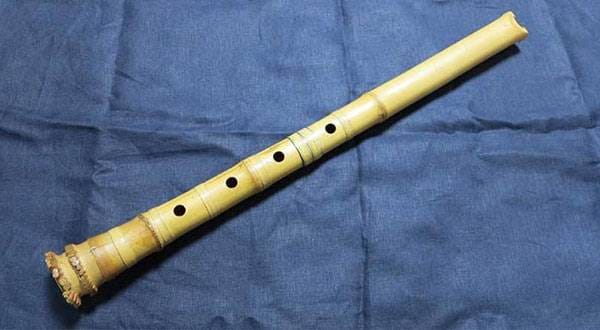
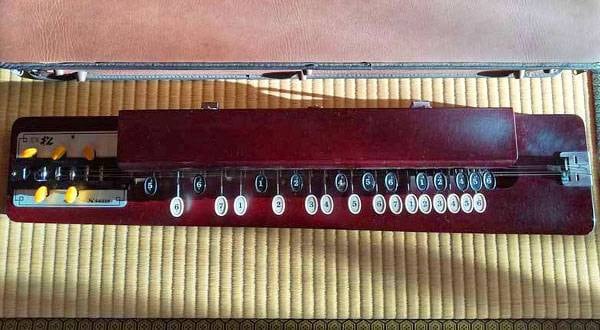

![[2023] Recommended Popular Tuners for Shakuhachi and Koto](/contents/uploads/thumbs/2/2019/6/20190620_2_6659_1.jpg)
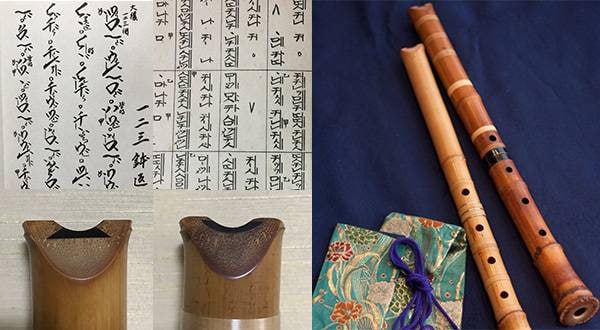
 SENNHEISER(ゼンハイザー)特集
SENNHEISER(ゼンハイザー)特集
 SONEX 吸音材特集
SONEX 吸音材特集
 サウンドハウス社員が選ぶ 『おもしろ商品』はコレだ!
サウンドハウス社員が選ぶ 『おもしろ商品』はコレだ!
 AUDIXマイク購入ガイド
AUDIXマイク購入ガイド
 超オススメのフレーズ道場 尺八
超オススメのフレーズ道場 尺八
 サウンドハウス虎の巻 !
サウンドハウス虎の巻 !















